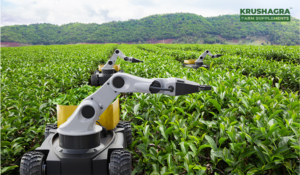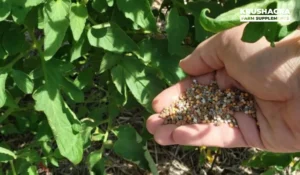Introduction
Integrated Pest Management (IPM) is a holistic approach to pest control that aims to minimize the use of synthetic pesticides while effectively managing pest populations. In recent years, there has been growing interest in the use of biopesticides as a key component of IPM strategies. Biopesticides are derived from natural sources, such as plants, microorganisms, and insects, and offer a sustainable and environmentally friendly alternative to chemical pesticides. This blog explores the potential of biopesticides in IPM strategies for controlling thrips and mites, two common and damaging pests in agriculture.
Understanding the Threat: Thrips and Mites
Thrips and mites are tiny arthropods that can wreak havoc on a wide range of crops. They damage plants by feeding on plant tissues, causing leaves to become discolored, distorted, and eventually leading to reduced crop yields. Additionally, some thrips and mites are vectors for plant diseases, further exacerbating their threat to agriculture.
Challenges with Chemical Pesticides
Traditionally, chemical pesticides have been the go-to solution for thrips and mite control. However, their overuse has led to several concerns, including pesticide resistance, environmental pollution, and harm to non-target organisms. In response to these challenges, biopesticides have emerged as a promising alternative.
The Potential of Biopesticides in IPM
- Specificity: One of the key advantages of biopesticides is their specificity. They often target specific pests without harming beneficial insects, which is crucial for maintaining a balanced ecosystem in the agricultural environment. For instance, the predatory mite Phytoseiulus persimilis is a biocontrol agent used to combat spider mites without harming other organisms.
- Reduced Environmental Impact: Biopesticides are typically less harmful to the environment compared to synthetic chemicals. They have a shorter persistence in the environment, reducing the risk of residue buildup in crops and soil. This makes them a more sustainable choice for long-term pest management.
- Minimal Residue: Consumers are becoming increasingly concerned about pesticide residues on their food. Biopesticides leave minimal residues, making them a safer choice for both farmers and consumers. This can also lead to better market access and higher prices for organic and pesticide-free produce.
- Resistance Management: Pests tend to develop resistance to chemical pesticides over time, rendering them ineffective. Biopesticides, on the other hand, often work through multiple modes of action, making it more difficult for pests to develop resistance. This can extend the longevity of pest control strategies.
Challenges and Future Directions
Despite the significant potential of biopesticides in integrated pest management (IPM), several challenges and future directions need to be addressed for their widespread adoption. One of the primary challenges is the limited persistence of biopesticides, which often necessitates more frequent applications compared to synthetic chemicals. This can increase operational costs and labor requirements for farmers. Additionally, the cost of biopesticides can be prohibitive for small-scale farmers, hindering their adoption in resource-limited regions.
Regulatory hurdles pose another challenge, as the approval process for biopesticides can be complex and time-consuming. Streamlining regulatory procedures and providing support for biopesticide development could expedite their entry into the market.
Looking ahead, research and innovation in biopesticide technology should focus on enhancing their persistence, efficacy, and affordability. Developing formulations that prolong their activity and exploring novel delivery methods could address some of these challenges. Furthermore, educational outreach and training programs for farmers are crucial to ensure proper biopesticide application and maximize their benefits. By addressing these challenges and advancing research efforts, biopesticides can play a more prominent role in sustainable agriculture and IPM strategies worldwide.
Conclusion
Biopesticides hold tremendous promise in integrated pest management strategies for thrips and mite control. Their specificity, reduced environmental impact, minimal residue, and resistance management benefits make them a sustainable and effective alternative to chemical pesticides. As agriculture continues to embrace environmentally friendly and sustainable practices, biopesticides are likely to play an increasingly vital role in safeguarding crops and ensuring food security while preserving the natural ecosystem. Farmers and researchers alike should continue exploring and harnessing the potential of biopesticides to address the pressing challenges of thrips and mite infestations in agriculture.






